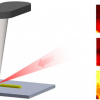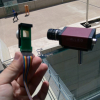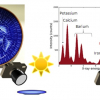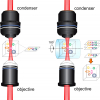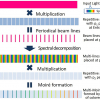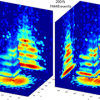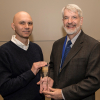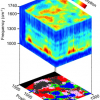Imaging News
The Jena-Davis (JEDIS) Alliance of Excellence in Biophotonics has been established, designed to promote North American–German cooperation on research and development in the field of biophotonics.
Whilst serial numbers erased from metal can be recovered, it has proved impossible to do so for polymers. Now, Raman spectral imaging offers a way.
Researchers from Brown University, Rhode Island, USA, have demonstrated a way to use terahertz spectroscopy on the nanoscale.
Researchers at Ben-Gurion University of the Negev (BGU) have developed miniaturised hyperspectral technology as an add-on for a standard camera that will generate superior quality images and video faster and at a lower cost than currently available commercial devices.
Achema 2018 is inviting contributions to the Achema Congress and the PRAXISforums; deadline 22 September 2017.
A cooperation between Messe München India and the Indian Pharma Machinery Manufacturers Association (IPMMA) will collocate events jointly representing 600+ global and Indian companies.
A Japanese research group has developed new techniques to perform analysis and imaging of chemical elements by taking images of a target material using an ordinary, visible-light digital camera with a slight modification, and obtaining X-ray spectra from processed images.
A new optical spectroscopy technique developed by researchers at Lawrence Livermore National Lab promises to improve accuracy and lower costs of real-time assessment of kidney function.
Stimulated Raman projection microscopy and tomography using a special type of laser beam to penetrate deep into tissue might lead to technologies that eliminate the need to draw blood for analyses including drug testing and early detection of diseases such as cancer and diabetes.
A research team at Osaka University has developed an approach to increase the resolution of multichannel spectrometers.
The WADI project is using hyperspectral, multispectral and thermographic infrared imaging to detect soil moisture and those leaks from water mains in rural areas.
Quantum mechanics dictates how particles and forces interact, and thus how atoms and molecules work, for example, what happens when a molecule goes from a higher-energy state to a lower-energy one. But beyond the simplest molecules, the details become very complex. Now, a Pixel-Imaging Mass Spectrometry camera and a femtosecond vacuum ultraviolet light source are showing how does quantum mechanics work in larger, more complex systems.
The 2017 Pittsburgh Analytical Chemistry Award has been given to Professor Pawliszyn.
On 15 March Ghent University officially launches a prestigious research project on precision agriculture, led by Abdul Mouazen.
Princeton Instruments has appointed ROSH Electroptics as their exclusive sales representative in Israel.
Researchers have reported a new development of hyperspectral infrared nanoimaging. It is based on Fourier transform infrared nanospectroscopy (nano-FT-IR) and enables highly sensitive spectroscopic imaging of chemical composition with nanoscale spatial resolution.
Researcher from the Graphene Flagship have developed a novel graphene-based infrared (IR) detector demonstrating record high sensitivity for thermal detection. Graphene’s unique attributes pave the way for high-performance IR imaging and spectroscopy.
TeraView says that its terahertz imaging and spectroscopy products could be employed to help regulatory authorities, law enforcement agencies and industry screen for counterfeit drugs

